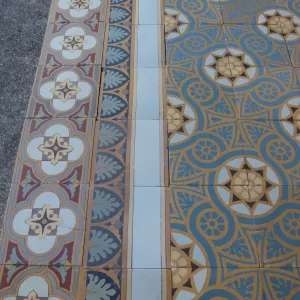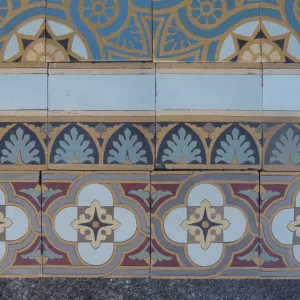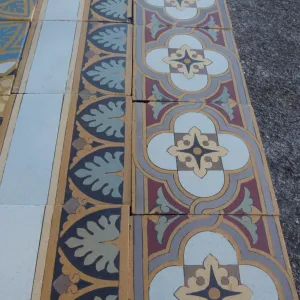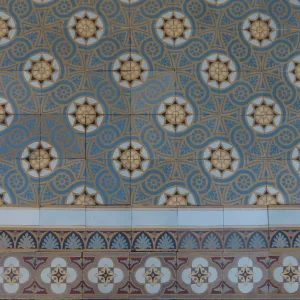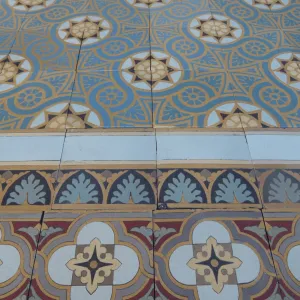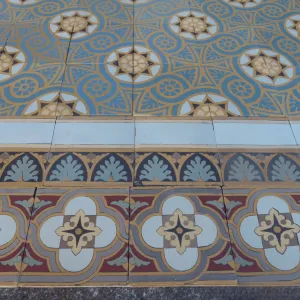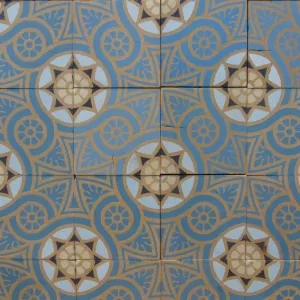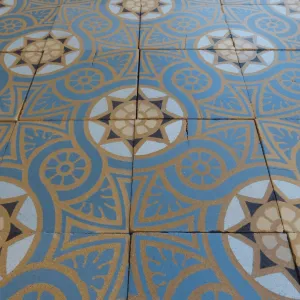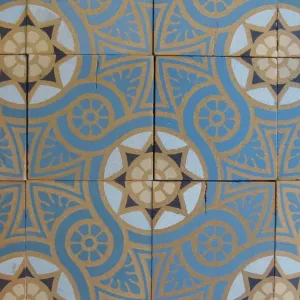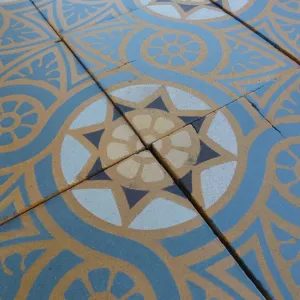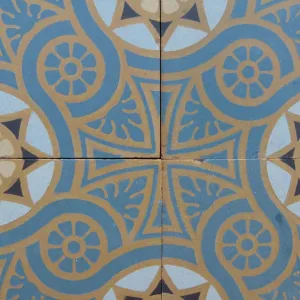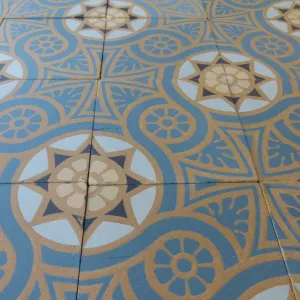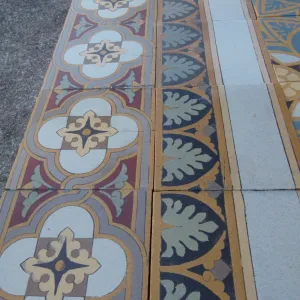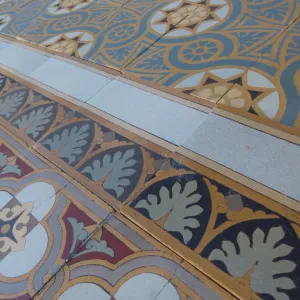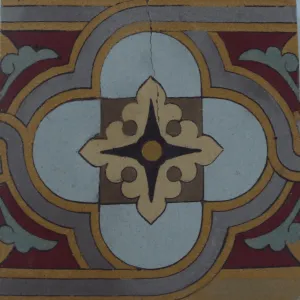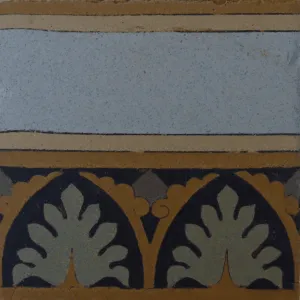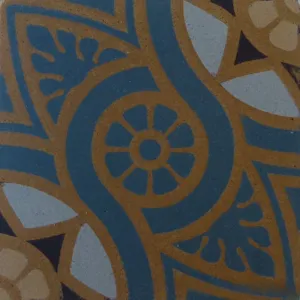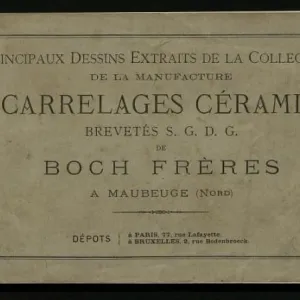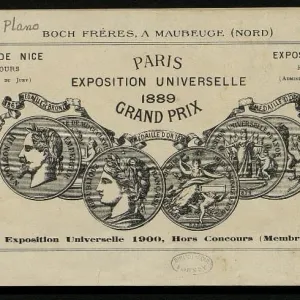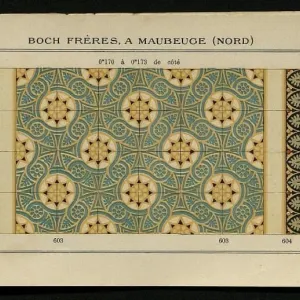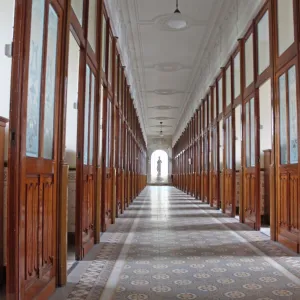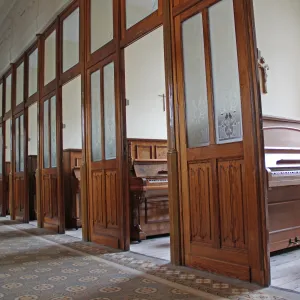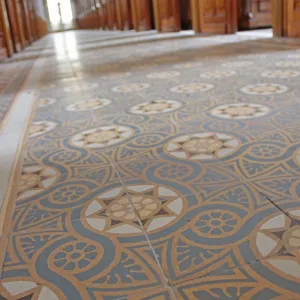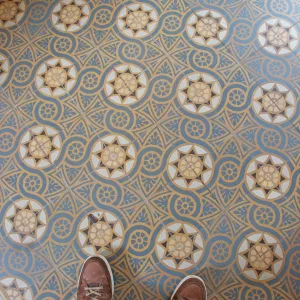A c.188 sq ft Heritage Boch Frères Ceramic Floor c.1900
This exceptional French ceramic floor was crafted around 1900 by the esteemed Boch Frères of Maubeuge, France — a name revered in European ceramics. These tiles are not only beautiful, they are pieces of living history and will connect your space to the refined French craftsmanship and artistic spirit of the early 20th century. We include in the photo gallery scans from the original Boch Freres catalogue presenting the tiles.
Each tile is approximately 6.7 inches square and weighs over 2.2 pounds. Handmade and built to endure, they reflect the high standards of a manufacturer that served both private residences and grand public buildings.
Tiles like these once adorned the homes of the French bourgeoisie and landmark institutions. A striking example is the Ursulinen School in Waver, Belgium, a renowned Art Nouveau architectural treasure where this very floor remains intact, still radiating elegance more than a century later. We incude photographs from the school in the photo gallery.
The floor has been carefully restored and is ready to relay. Photographs of a section measuring approximately 13 sq ft illustrate its remarkable detail—intricate four-tile patterns, rich coloration, and a timeless design. While some tiles show minor edge nibbles or chips, these are all groutable, consistent with their age and add to their unique charm.
Two sets of original border tiles accompany this floor and these borders don’t have to be used side by side—they can define specific areas in your space or create visual accents. We’re happy to provide layout guidance.
Tile inventory (approximate):
- Field Tiles – 430 tiles – 137 sq ft
- Border Tiles, 'Vegetal/White Band' – 103 tiles incl. 3 corners – 57.4 linear ft
- Border Tiles, 'Red' – 73 tiles incl. 3 corners – 40.7 linear ft
Note:-
Our antique tiles were originally handmade in single or two tile molds. Pre-computer fabrication these molds were machined by hand & the colour slips to create the tile were mixed by measure and eye. When firing the tiles, the kiln temperatures of c.1,100F degrees could also be variable. The result of this production process is that tiles made during this period of non-automation often display subtle size & thickness variations and there can be tonal variations in colors, all of which add to their charm and uniqueness. When photographing a floor, we always take a random section so that it is representative of the whole in tones and patina.
A rigorous quality control during the restoration process will include in the sale any tiles with groutable small chips and edge nibbles, expected of tiles more than 100 years old, but include for free any with larger defaults as rejects, which the tiler can then use for offcuts.
Can we help?
If you can provide a technical drawing, or a simple sketch with key dimensions, we are happy to assist in evaluating and recommending the best layout of the floor in your area of choice. Click here for more details
